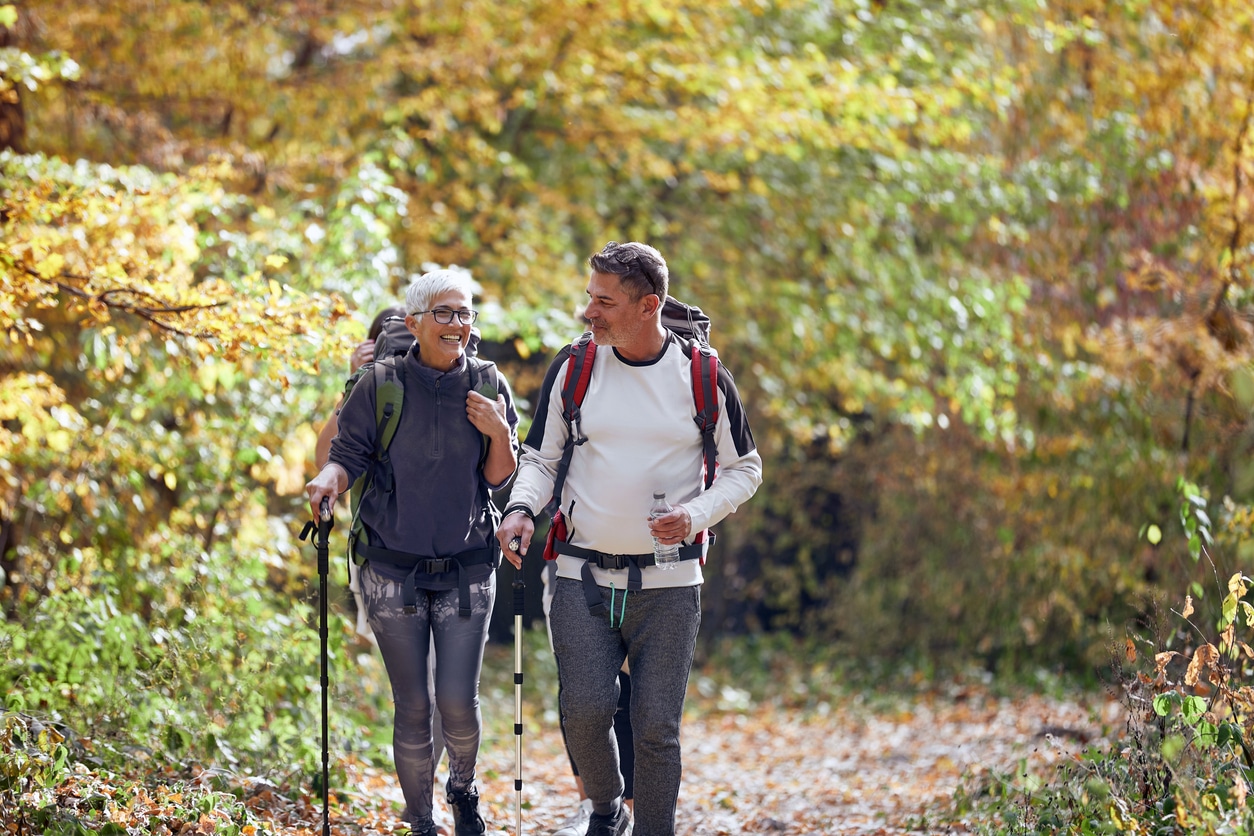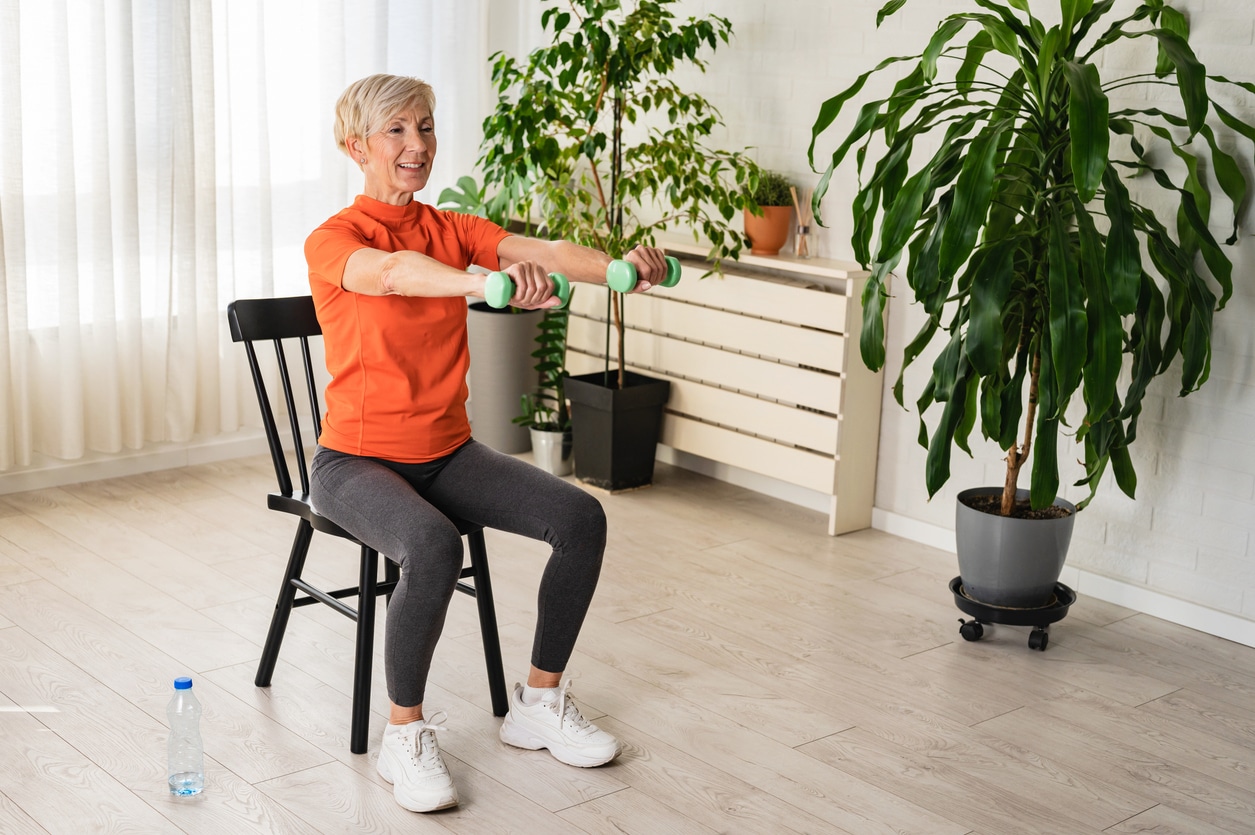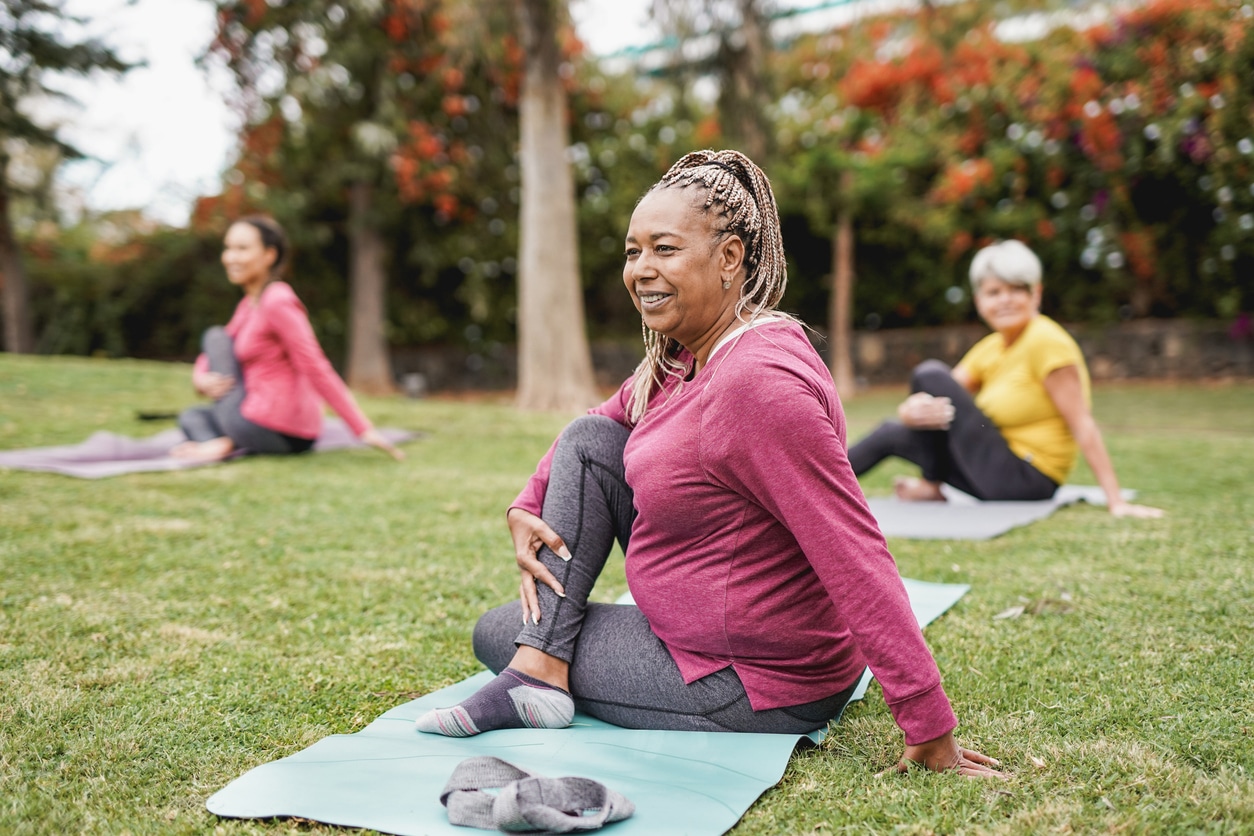The changing seasons provide new opportunities to be active. We compiled a list of ideas for staying mentally, socially, and physically active all year long. Remember, always talk to a health professional before starting a new exercise or fitness activity.
2 Spring Activities for Seniors
Spring is a great time to get outside. Here are two ways to stay active during the Spring season:
Gardening
Tending a plot of ornamental plants or delicious vegetables and fruits has a lot of benefits beyond the harvest. It keeps you active and flexible, helps you get Vitamin D from sunshine, and creates a calming effect. CDC data show that as little as 2.5 hours of moderate physical activity like active gardening each week can help maintain a healthy weight and avoid conditions like high blood pressure and other cardiac issues, colon cancer, depression, osteoporosis, type 2 diabetes, and even premature death.[i] Pro Tip: Don’t like digging in the dirt? Consider flower arranging or cooking with items from someone else’s garden.
Walks and hikes
“Walking is an excellent choice for a low-impact activity to improve cardiorespiratory endurance,” explains Sabrena Jo, the American Council on Exercise’s director of science and research. “Walking on various terrains – outdoors, uphill, downhill, and on the sand, etc. – will challenge muscles in different ways and may be more engaging. Just be sure the walking areas are well-maintained and free of tripping hazards.” Pro Tip: Wear comfortable walking or non-slip shoes and appropriate workout clothing.
2 Summer Activities for Older Adults
Check out two ideas to stay mentally and physically active during the Summer season.
Vacation book club
No matter how old we are, summer is associated with vacation. Expand your ability to travel with a book club focused on fiction or nonfiction titles about your dream destinations or adventures. Besides being a low-cost way to “vacation”, reading has physical, emotional, and social benefits that help us age well. Your book group can be as big or small as you like and meet in person or use chat technology to meet virtually.
Pro Tip: In addition to the topic, consider the book’s length, reading level, price, and availability at stores, libraries, and digital readers.
Swimming
This cardiovascular activity provides a full-body workout that “helps senior adults maintain cognitive functions and slows down the rate of muscle tissue loss,” explains Bill Brenner, chief operating officer of U.S. Masters Swimming, which sponsors 1,500 clubs across the country. “It’s easy on the joints and enhances aerobic and anaerobic capacities.” Make sure you consult with your health professional to make sure you’re healthy enough to begin a swimming fitness program.
Pro Tip: “Once you get to the pool, approach your workouts with moderation. Have a coach help you set goals, keep you motivated, and swim with proper technique to reduce the risk of injury,” Brenner advises.
Explore more ideas for indoor and outdoor summer fun.
2 Fall Activities for Active Seniors
We’ve got two suggestions for celebrating nature during the autumn months.
Birdwatching
Lots of people like looking at leaves in the fall, but there’s something else worth watching in those trees: birds! And autumn is a good time for birdwatching because our feathered friends can be easier to spy when there are fewer leaves. Birding is a good way to connect with nature and can be done from your window or out in the wild. It’s also meditative because you have to sit quietly and be present to avoid spooking the shyer species. Pro Tip: Channel your inner naturalist with a set of binoculars and a birding guide organized by feather color.
Natural crafting
Fall is a great time to gather natural items and channel your creativity. “I like to think of it as shopping from your yard,” notes artist Janet McKean. “I like to pick up things when I see them on my walks and label and organize them so they’re ready when I want to do a project.” Gather pods, branches, moss, fronds, dry grasses, fallen leaves, pinecones, holly, and other evergreens to create wreaths, centerpieces, and arrangements. Rocks, pebbles, or shells also make nice accents. “The materials are readily available at no cost to you and they’re recyclable. Use your imagination and have fun.” Pro Tip: Creative pursuits are good for our physical and cognitive health.
Get some ideas for an autumn picnic.
2 Winter Activities for Older Adults
Here are two options for staying mentally and physically active as the year winds down.
Exercise videos
“Many people use winter as a time to reset health-wise but are often hesitant to walk into a new environment, be it because they are intimidated, feel too out of shape to do a certain workout, etc.,” explains fitness specialist Dana Harshaw, founding owner of Barre3 Chapel Hill. “Using an online workout helps gain confidence and find a workout that really suits you before taking the leap and walking through a studio’s or gym’s doors.” Plus, she notes, “Exercise is proven to help your immune system, and winter is prime season for getting sick. Seasonal depression is also a real issue for some people, and again, exercise helps boost your mood.” Pro Tip: Exercise safely. Make sure there’s plenty of room to move without bumping into something or tripping over furnishings, rugs, or cords. And if you’re exercising alone, create a buddy system with a friend or family member and check in with them before and after your workout.
Cooking
Cooking engages our brains and our bodies, and nothing makes a home feel cozier than delicious smells coming from the kitchen. Even if you’re not confident in the kitchen, you can try simpler recipes or ask a friend with skills to collaborate. Make your seasonal favorites or revisit comfort food classics. Or do a winter soups swap with some friends and stock your fridge.
Pro Tip: Food banks make it more affordable to cook at home on a tight budget.
Read up on ways to stay warm in winter.
These seasonal activity ideas are just a start. Now that you know what’s possible, look for other opportunities to engage your body and your brain throughout the year.
[i] CDC – Division of Nutrition, Physical Activity, and Obesity. How Much Physical Activity Do Adults Need? https://www.cdc.gov/physicalactivity/basics/adults/index.htm




